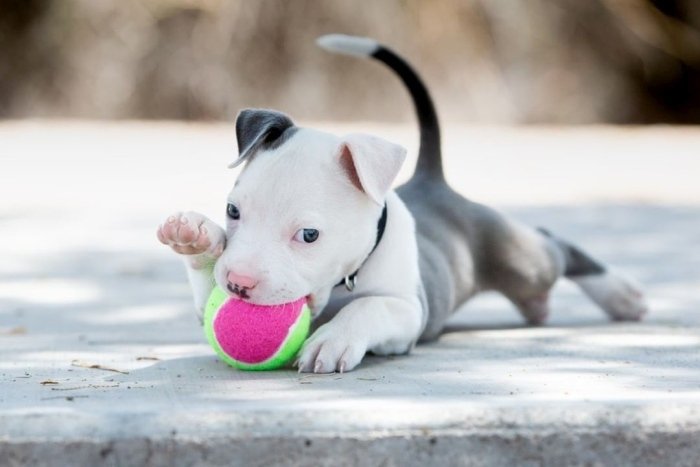The American Bully Daily is an exclusive online provider of facts and information about the Pitbull dog breeds. We aim to help Bully parents and owners understand the needs of this unique breed. Learning useful information about Pitbulls gives you an edge as a pet parent is facing the challenges that may come with training and caring for your pet. Allow us to introduce to you the Pitbull Dog with this comprehensive guide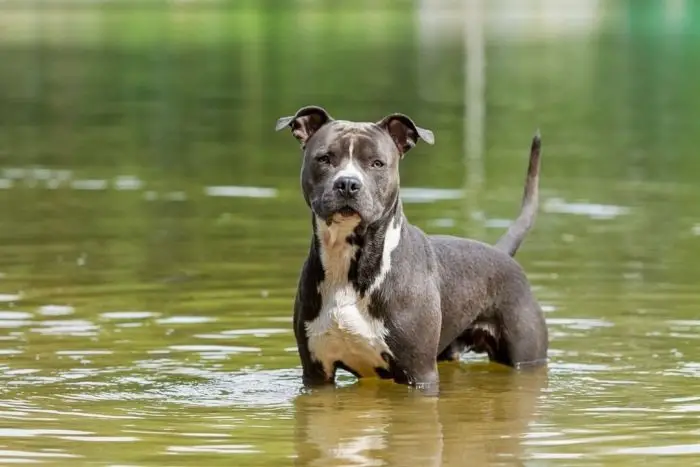
The American Pit Bull Terrier Dogs and Their Origin
When there is a discussion about these dogs, breeders and enthusiasts usually encounter a lot of misunderstanding and misidentification of this type of dog. There seems to be a lack of agreement on the exact breed of Pitbull terrier dogs. The name refers to a kind of dog, not a breed.
It might come as a surprise to many, but prestigious organizations like the American Kennel Club and the United Kennel Club do not recognize the American Pitbull Terriers as a breed. The term is now used interchangeably in referring to several types of breeds or mixed dog breeds. Typically, when people refer to “Pitbulls,” they could be any of the following breeds or combination thereof:
- American Bulldog
- American Pitbull Terrier
- English Bull Terrier
- American Staffordshire Terriers
- Staffordshire Bull Terrier
Most dog breeders and enthusiasts debate over the generic term. Still, it has become an essential issue to the public when various laws, such as rental leases and ordinances, exclude these types of dogs. Likewise, the name now describes any dog with a big body type and a square face including Staffordshire terriers and the American Pitbull terriers. If you like pitbull you should check our guide about American bully dogs
These dogs originally came from Britain in the 1800s with the Olde English Bulldogs as their foundation breed. They were bred for blood sports such as bull-baiting, thus the name. During the early times, British folks find entertainment in shows where dogs were pitted against bulls. Fortunately, the sport was declared illegal in 1835 due to its destructive nature. Yet, it was replaced by another bloodsport – dogfighting. The Olde English Bulldog was crossed with terriers to produce smaller canines with strength and agility. Later on, this sport was also declared illegal and inhumane.
The English Bulldog and terrier cross were soon brought to America by immigrants. The dogs are highly valued for their fighting skills, and they are trained to be guard dogs and protectors. These dogs kept homesteads safe against dangerous animals and intruders. They also served as hog catchers and helped in hunting. More so, these strong and agile canines served as companions to the immigrant’s children. Thus, they had a special place in the family home and society.
Over the years, this crossbreed has become a prominent part of the American culture. They have exceptional traits that gave them the impression of the All-American dog. They are hardworking, brave, loyal, loving, and friendly dogs to have around. Their popularity is evident in many ads, magazines, TV shows, and movies.
At present, Pit-bulls dogs are no longer fighting animals. They are now known as loving and loyal champs. Celebrities, politicians, and icons are also in love with this breed.

Pitbull Dogs Lifespan
Generally, these dogs can live a full, healthy, and happy 13 to 15 years of life. Depending on the circumstances they face, this can be longer, but their years may also be reduced if they have any health conditions.
The Temperament of Pitbull Dogs
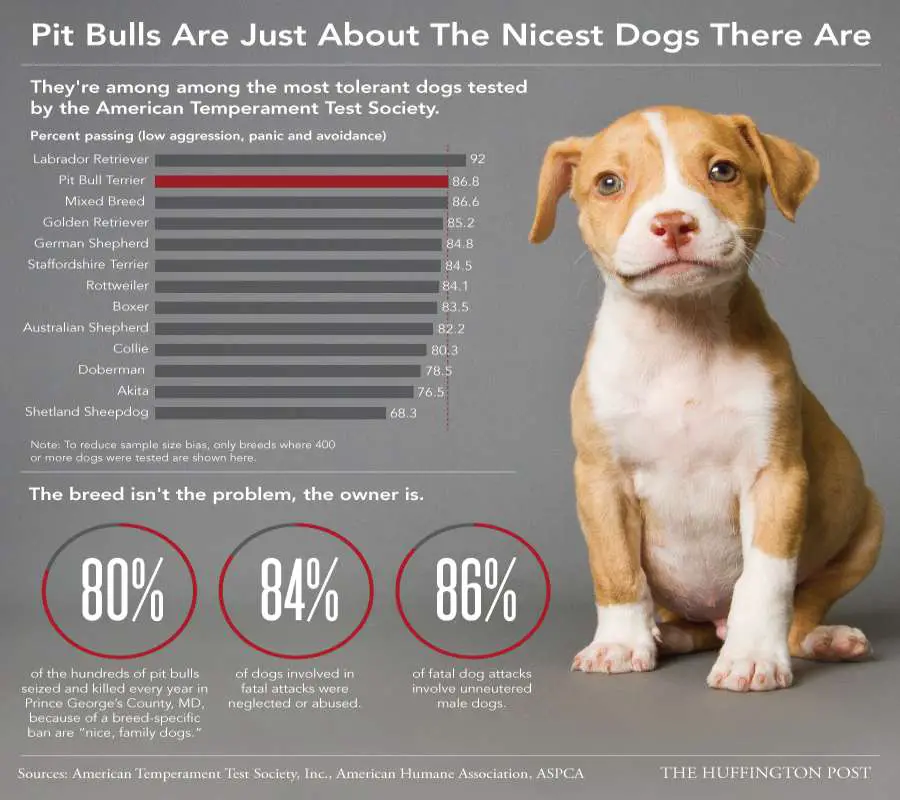
Initially, American Pitbull terriers were aggressive as it is required for the sport they are engaged in. They have to be aggressive to win against bulls and other dogs.
When these canines arrived in America, they became loyal working companions. The aggressiveness began to fade as they focused on breeding more docile and hardworking dog breed. In turn, these bull terrier dogs are now excellent guardians, hunting companions, and loyal family pets.
Modern Pit-bull dogs are friendly, loyal, intelligent, and robust protectors of the home. Their aggressiveness has toned down, but they are still dangerous when it comes to potential threats towards their owner and home. Thus, they become excellent guard dogs that are vigilant to strangers while staying affectionate to their family.
You can find American Staffordshire terrier and American Terrier Pitbull to be very very friendly. But they need early socialization training. When properly socialized and trained, the American Pit Bull Terrier and American Staffordshire Terrier are not instantly aggressive towards other people, unless there is a threat. Aggression in these dogs is not a desirable trait and should be managed early on in their lives.
When it comes to other canines, these dogs may display mild aggressive behavior. However, they would rarely attack the other dog. Once these dogs become used to the presence of the other canine, they do warm up to them. On the other hand, you have to practice caution when there are other animals such as cats, fowls or rabbits around your Pit bulls. They have a high prey drive, which may trigger their need to hunt.
Size, Weight, Height

Pitbull Terriers have bulky and muscular built with square faces. The male stands at 19 inches at the withers and weighs around 30 to 80 lbs, while females are about 18 inches and 30 t0 80 lbs in weight.
It is also important to note that these dogs can grow bigger or smaller than their standard size and weight.
Related Post:
Health Issues
American Pitbull terrier dogs are generally healthy, especially when given a healthy diet and exercise. However, they are also predisposed to some health issues that are typically genetic. Here are some conditions to watch out for if you have this type of dog breed.
- Hip Dysplasia – most of the time, this condition is inherited. The dog’s hip is improperly formed; thus, they develop canine arthritis and chronic pain. A Pit bull terrier with this condition have lameness on their hind legs, prolonged limping, and struggle with running or climbing stairs. If not treated early, this can be life-limiting for your canine.
- Knee Problems – these dogs love running and playing. But impulsive moves and their heavy-set bodies make them prone to cranial cruciate ligament issues. This condition usually starts with a partial tear in the connective tissue on the doggo’s knee. It can lead to limping and pain, and if physical activity continues, the knee can pop completely. It may require surgery to treat the torn ligament in such cases.
- Thyroid Diseases – Pitties are also prone to Thyroid illnesses. This condition is linked to obesity and skin diseases because they start to gain weight when the thyroid gland fails to secrete enough hormones. It may also manifest through fearful aggression and other behavioral changes. Diagnosing this health issue is through blood screening. In most cases, you will need synthetic hormones to manage this disease. Similarly, owners need to address the effect of hypothyroidism as it can cause obesity and gastric torsion.
- Allergies – Pitties are also prone to various types of allergies than other breeds of dogs. It can be anything from pollens, grass, ticks, or fleas. These dogs also have food allergies, especially those with grain and wheat. It will manifest through increased liking, scratching, drooling, and shedding. Additionally, frequent scratching may lead to wounds and bleeding. Thus, this condition needs early detection to prevent infection.
- Heart Problems – these dogs may also inherit different heart problems from their parents. One example is the aortic stenosis, which is an abnormal narrowing of the connection between the aorta and the left ventricle. Dogs with this condition sometimes do not have any symptoms, but they can become lethargic or have sudden deaths. More so, these dogs may also have valve malformation that impacts blood circulation and heart rhythm. Thus, it might be a good idea to include heart checkups on your regular vet visits.
- Cataracts and other Eye Problems – American Pitbull terrier owners should also look out for eye problems in their pets. These dogs develop cataracts earlier than other breeds and have higher chances of experiencing this health issue. It can be either an acquired or hereditary condition. In some cases, it is a side effect of other illnesses such as hypocalcemia or diabetes.
Feeding
Ideally, a meat-based diet is the best meal for a Pitbull dog. It has to be whole meat or mostly meat to provide for its protein requirement. Avoid giving them food with high nitrates and phosphorus content. If you are going to provide them with commercial dog food, check if it contains filler such as wheat, corn, or potatoes. Some products have more vegetables and grains than meat in the ingredients. These are not ideal for this kind of dog. Additionally, grains and fillers in their food may trigger allergies to your pet.
You can feed your Pittie two to four meals a day. Each meal should satisfy their hunger, so make sure that you give them enough for their needs. Also, keep in mind that they should not eat for half an hour after exercising.
Rescue Groups
Pitties are some of the most misunderstood dogs, and many end up in shelters around the country. There are rescue groups that are dedicated to finding these canines their forever homes. Some organizations to contact are the Animal Farm Foundation, Bad Rap, and Pit Bull Project.
Rare Coat Colors and Grooming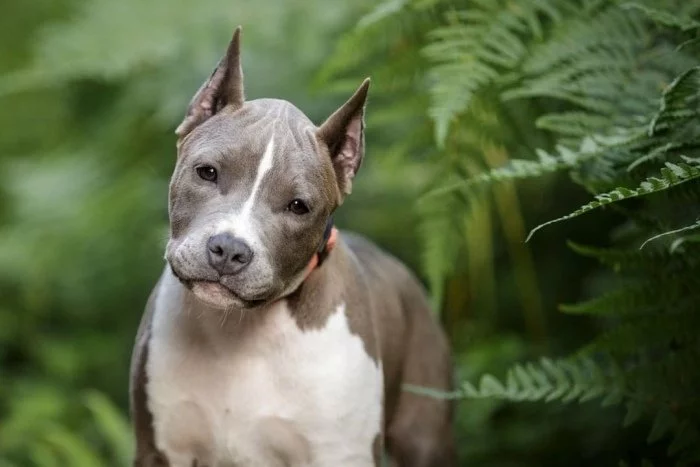
The American Pitbull Terriers have short coats that are shiny and stiff. They need very little grooming and occasional as their skin is easy to keep clean. You may use a stiff brush and wipe them with a clean cloth to keep the coat shiny. These dogs’ coats come in attractive and rare colors such as black, white, brindle, grey, brown, blue, and red. But the most popular colors are the following:
- Brindle – this color has one with a brown base and stripes of black and dark brown. Some have stripes like a tiger, while others have blotchy markings. This color was first noticed in the early 1900s when a fawn Pittie was bred with a brown terrier dog.
- Black – in most cases, the American Staffordshire and the American Pittie produce pure black with white speck puppies. The white marks often appear in the chest area. These dogs mostly serve as guard dogs, cattle drivers, and hunting companions.
- White – white Pitties are uncommon, and they look adorable from puppyhood or grown-up. With proper training, they become loyal and admirable companions. Their coats are glossy, but not smooth to touch. They may also have markings in other colors with eyes that may either be brown, red, black, or multicolored.
- Red Nose Pitbull – these dogs are typically all red. They have red noses, lips, eyes, and toenails. The red color is often linked to hot-tempers and violence, but how they behave is generally influenced by how they grow up.
- Blue Nose Pitbull – these are the rarest Pittie colors. They have a unique blue nose and a blue coat, as the name suggests. These dogs are a mix of terrier and bull terriers, and their color is a result of a recessive gene they inherit from one of their parents. It means that they do not generate enough melanin for pigmentation. They are more of a silver-gray and charcoal color.
For their grooming needs, these dogs have a coat that’s easy to keep clean and maintain. They require an occasional bath and some brushing using a stiff brush. These dogs may need regular wiping down to keep their coat shiny.
To prevent dental problems, brush your dog’s teeth two to three times a week. It will remove the buildup of tartar and bacteria that lurk in the mouth. A daily brush is better in preventing gum diseases and bad breath.
If your pooch does not wear down their nails, trim it once or twice a month. Once you hear them clicking on the floor as they walk, their nails are too long. But remember, these dogs have blood vessels in their nails, and cutting it too far can cause pain and bleeding. If you have no experience in this job, better ask a groomer instead.
Likewise, check your dog’s ears weekly for signs of redness, bad odors, or infection. You can wipe the outer ears clean with a cotton ball and a ph-balanced cleaner, but avoid cleaning the ear canal. You should also train them to like brushing and examining while they are still puppies. Dogs can be touchy about their feet, so always handle their paws for them to be accustomed to it. Fill grooming with rewards and praises to make a positive experience out of it. When they become adults, they will behave well during grooming and veterinary visits.
Further, check for sores, rash, or signs of infection as you groom. If you notice any redness, inflammation, or tenderness on their skin, eyes, nose, mouth, and feet, bring them to the vet at once. These weekly examinations will help detect potential health issues early, and you can provide immediate attention to it.
Training Tips for Pitbull Puppies
There are a few basic things that Pittie owners should consider when training their pets. Ideally, training starts with you as the owner, and you should learn how to give it to your pet in every situation.
Dogs want to be part of a pack, and they will react to you. So if you’re going to adjust any negative behavior, don’t scold or yell at them. Focus on changing how they express these instincts differently. Ideally, training starts while your dog is in the puppy stage. What they learn during this period will grow with them into adulthood.
Here are some tips for training your Pittie puppies:
- Do not lose your cool – stay calm and don’t show your puppy your frustration. It will all get better in time.
- Start from day one – teach your puppy that you are the Alpha or the leader. Show them that you are in control so that they will follow you.
- Introduce your puppy to everyone and everything – socializing them will help them behave in different situations.
- Take them for walks – exercising them will teach them to follow your lead and be comfortable on a leash.
- Play with your puppy – playing will do wonders and will make him look forward to playtime as a reward for behaving well.
Countries That Ban Pitbull Dogs
These dogs are restricted in many countries because of their bad reputation for aggressiveness. Some of the countries that have banned them entirely or have placed restrictions on ownership, rescue and importation are:
- Argentina
- Belarus
- Parts of Canada
- France
- Germany
- Italy
- New Zealand
- Russia
- Singapore
- United Kingdom
FAQS About the American Pitbull Terrier
Are Pitbull a Good Family Dog Breeds?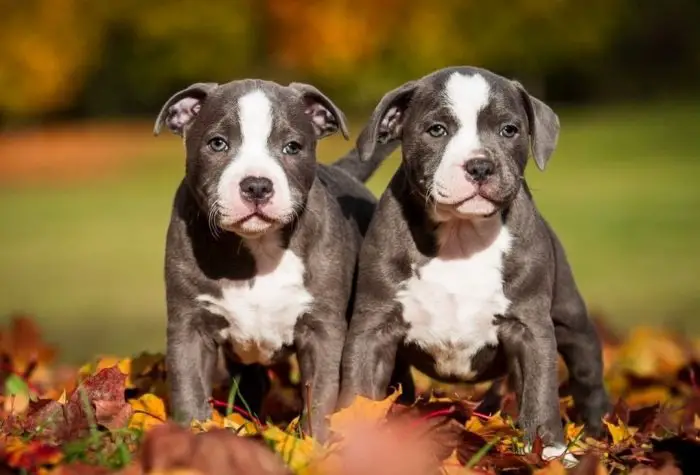
Pitties, when given early socialization and training, can be the best family pet you’ll ever have. They are not even good guard dogs because they love people so much, though they may intercede and threaten with a dog bite when someone threatens “their” people. These dogs are excellent with children, and they thrive as a part of the family. They are loyal, friendly, and affectionate to both adults and children.
However, you have to bear in mind that these energetic breed dogs need a lot of attention and a firm leader to give them gentle discipline. These dogs are not for people who do not have the time, energy, or patience to train and care for them.
How Long Does Pitbull Live?
With proper care, health, and nutrition, a Pittie can live a happy and active life beyond 16 years. But the average lifespan of these dogs is between 12 to 16 years.
How Much Does Pitbull Dog Cost?
If you want to have a Pittie puppy, many breeders are offering them between $500 to $700. If coming from a good bloodline, the price can go higher up to $2000. Likewise, for rare colors, especially for Red Nose and Blue Nose Pitties, you can expect to pay these puppies premium prices.
Make sure to speak with a legitimate and registered breeder to ensure that you get a genuine puppy with basic training. More so, if you don’t feel like buying, your next best option is to adopt. Check out rescue centers and shelters. They always have a doggo for people who wish to have a pet to love in their family. But bear in mind that you are likely to get an adult dog from shelters and rescue centers.
Are Pitbulls Dangerous?
According to experts, there are no dogs that are inherently dangerous. Pitties, like any other dogs, may only become violent, aggressive, and dangerous when they experience abuse, neglect, or were with irresponsible owners and breeding.
And like other dogs, Pitties can be loyal, loving, protective, and beautiful canine companions with proper training, attention and grew up to a gentle and giving environment.
Are Pitbulls Naturally Aggressive?
These dogs are naturally “Dog Aggressive.” They turn on other dogs and animals, even those that they grew up with. Their aggressiveness is due to years of inbreeding for dog fighting. It is a good idea to keep them on a leash when out for a walk. They may not start a fight with other dogs, but they sure will not back down when triggered.
How to Stop Pitbull Dog Aggression?
The first step in stopping or minimizing dog aggression with your Pitbull is to find out the potential root cause of their negative behavior. It can be anything from lack of education, lack of socialization, traumatic experiences, and pathologies.
Aggression is not an inherent characteristic nor is it breed-specific, and proper training and socialization will correct these traits. For these reasons, owning an American Pitbull Terrier is not for people who cannot commit their time and attention to it. These dogs need socialization and training while they are young to overcome their tendencies toward bossiness and stubbornness. They can be hard to handle if they learn that you are not the one in charge.
If you are not sure about proper dog training, it is best to find people with skills at Pitbull dog aggression training to guide you on how to handle your pet.
Conclusion
Pitbulls carry a bad reputation because there is news about attacks and viciousness. Some people think that they are dangerous, and there are even countries that ban them. Their origins may be “dark and vicious,” but these dogs have slowly evolved to become all-around farm and hunting companions. Later on, they become loyal and loving family pets and gentle “nanny dogs” around children.
RELATED POST:

